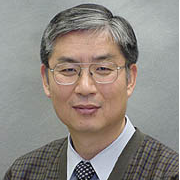Innovations in Metal Additive Manufacturing
A special issue of Metals (ISSN 2075-4701). This special issue belongs to the section "Additive Manufacturing".
Deadline for manuscript submissions: closed (31 May 2022) | Viewed by 3214
Special Issue Editor
Interests: additive manufacturing; synthesis of alloys; laser processing; advanced machining; multiscale multiphysics modeling; composites; laser welding
Special Issues, Collections and Topics in MDPI journals
Special Issue Information
Dear Colleagues,
Metal additive manufacturing is the fastest growing area of additive manufacturing. This Special Issue is to publish papers covering recent key developments and innovations in the metal additive manufacturing arena. With rapidly growing interest in metal additive manufacturing, the recent research efforts to better understand, analyze, and control the microstructure and mechanical properties have significantly increased all over the world. We welcome papers related to, but not limited to, physics-based modeling, data-driven modeling approaches to describing process–microstructure–properties relationships, in-process monitoring, process control, topology optimization, synthesis of new materials and alloys, design, analysis and manufacturing of lattice structures, hierarchical material design, materials for additive manufacturing, as well as various novel applications. This Special Issue will hence serve as a platform to share the latest knowledge and successful results with other fellow researchers and general audiences interested in metal additive manufacturing.
Prof. Dr. Yung C. Shin
Guest Editor
Manuscript Submission Information
Manuscripts should be submitted online at www.mdpi.com by registering and logging in to this website. Once you are registered, click here to go to the submission form. Manuscripts can be submitted until the deadline. All submissions that pass pre-check are peer-reviewed. Accepted papers will be published continuously in the journal (as soon as accepted) and will be listed together on the special issue website. Research articles, review articles as well as short communications are invited. For planned papers, a title and short abstract (about 100 words) can be sent to the Editorial Office for announcement on this website.
Submitted manuscripts should not have been published previously, nor be under consideration for publication elsewhere (except conference proceedings papers). All manuscripts are thoroughly refereed through a single-blind peer-review process. A guide for authors and other relevant information for submission of manuscripts is available on the Instructions for Authors page. Metals is an international peer-reviewed open access monthly journal published by MDPI.
Please visit the Instructions for Authors page before submitting a manuscript. The Article Processing Charge (APC) for publication in this open access journal is 2600 CHF (Swiss Francs). Submitted papers should be well formatted and use good English. Authors may use MDPI's English editing service prior to publication or during author revisions.
Keywords
- metal additive manufacturing
- modeling
- process monitoring
- new material synthesis
- applications of additive manufacturing
- materials for additive manufacturing
- lattice structures





